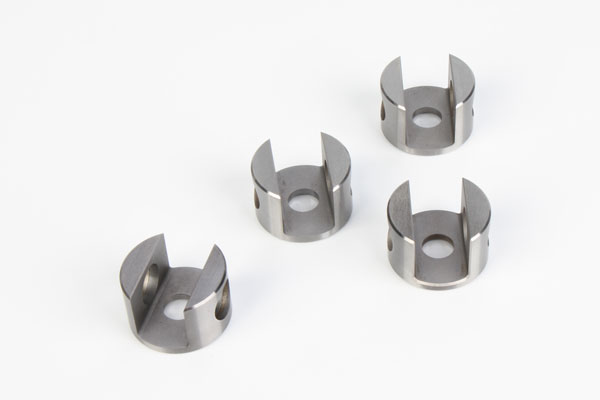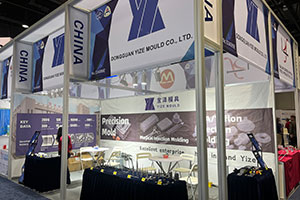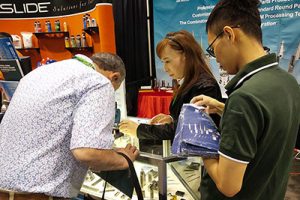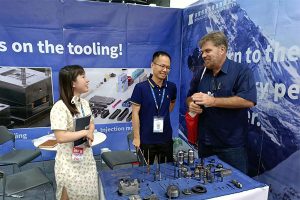Common Issues and Root Causes in Tungsten Carbide Pressing
Tungsten carbide, as a high-performance cemented carbide material, is widely applied in fields such as mold manufacturing, cutting tools, and wear-resistant parts due to its high hardness, excellent wear resistance, […]
Tungsten carbide, as a high-performance cemented carbide material, is widely applied in fields such as mold manufacturing, cutting tools, and wear-resistant parts due to its high hardness, excellent wear resistance, and high elastic modulus. However, during the pressing process of tungsten carbide, a series of problems often emerge. These problems not only act as “stumbling blocks” affecting product quality and performance but also may significantly increase production costs and reduce production efficiency. Next, this article, adopting a general-to-specific structure, will conduct a detailed analysis of the common issues and their underlying causes during the tungsten carbide pressing process, aiming to provide practical references for solving these problems.
I. Common Issues During the Pressing Process
(1) Mold Damage
Mold damage is a frequent occurrence during the tungsten carbide pressing process. It manifests as cracks, deformation, and wear on the mold surface. These damages not only shorten the mold’s service life but also destabilize product quality, bringing numerous hidden dangers to production.
La nostra attività in fabbrica: parti in metallo duro, parti di stampi, stampi a iniezione medicali, stampi a iniezione di precisione, stampaggio a iniezione di teflon PFA, raccordi per tubi PFA. e-mail: [email protected],whatsapp:+8613302615729.
(2) Unstable Dimensions of Pressed Parts
The dimensional stability of tungsten carbide pressed parts is a key indicator for measuring product quality. However, in actual production, issues of unstable pressed part dimensions frequently arise, such as oversized or undersized dimensions and irregular shapes. These problems may range from rendering products unusable directly to necessitating secondary processing, increasing production costs and time.
(3) Poor Surface Quality of Pressed Parts
The surface quality of tungsten carbide pressed parts directly affects their appearance and performance. Common surface quality issues include rough surfaces, bubbles, and inclusions. These problems not only make the products look unattractive but also may reduce their service life, affecting customers’ usage experience.
(4) Internal Defects in Pressed Parts
Tungsten carbide pressed parts may have internal defects such as pores, cracks, and porosity. These defects are like “time bombs,” possibly leading to fractures, wear, and other problems during product usage, seriously affecting their performance and safety.

II. Cause Analysis of Common Issues
(1) Causes of Mold Damage
- Unreasonable Mold Design: If mold design fails to fully consider factors such as material flowability and shrinkage, excessive stress and deformation may occur during the pressing process, leading to mold damage.
- Improper Selection of Mold Materials: The selection of mold materials should be based on product requirements and usage environments. If the material selection is inappropriate, the mold may not withstand the pressing force or thermal stress during usage, resulting in damage.
- Low Manufacturing Precision of Molds: Low manufacturing precision of molds may cause uneven stress and deformation during the pressing process, accelerating mold damage.
- Improper Use and Maintenance of Molds: Molds require regular maintenance and upkeep during usage to extend their service life. If they are not used and maintained properly, mold damage is likely to occur.
(2) Causes of Unstable Dimensions of Pressed Parts
- Fluctuations in Raw Material Composition: Fluctuations in the composition of tungsten carbide raw materials may lead to unstable dimensions of pressed parts. For example, changes in the content of elements such as carbon and tungsten in the raw materials may affect the hardness and flowability of the alloy, thereby influencing the dimensions of the pressed parts.
- Unstable Pressing Process Parameters: Unstable pressing process parameters such as pressing force, pressing speed, and holding time may affect the flowability and shrinkage of the alloy, leading to unstable dimensions of the pressed parts.
- Mold Wear: Molds gradually wear during usage, causing changes in mold dimensions. If the mold wear is severe, the dimensions of the pressed parts will become unstable.
(3) Causes of Poor Surface Quality of Pressed Parts
- Low Purity of Raw Materials: Impurities and bubbles in the raw materials may not be completely eliminated during the pressing process, possibly leading to rough surfaces, bubbles, and other issues on the pressed parts, affecting their surface quality.
- Improper Pressing Process: Improper settings of pressing process parameters such as pressing force and pressing speed may affect the surface quality of the pressed parts. For instance, excessive pressing force may reduce the alloy’s flowability, resulting in rough surfaces; while excessively fast pressing speed may prevent the gases in the alloy from being fully discharged, causing bubbles.
- Poor Surface Quality of Molds: The roughness and finish of the mold surface may affect the surface quality of the pressed parts. If the mold surface quality is poor, scratches, pits, and other issues may appear on the pressed part surfaces.
(4) Causes of Internal Defects in Pressed Parts
- Inclusions in Raw Materials: Inclusions such as oxides and sulfides in the raw materials may form pores or cracks and other defects during the pressing process, affecting the internal quality of the pressed parts.
- Improper Pressing Process Parameters: Improper settings of pressing process parameters such as pressing force, pressing speed, and holding time may lead to internal defects in the pressed parts. For example, insufficient pressing force may result in insufficient alloy flowability, causing porosity; while excessively fast pressing speed may prevent the gases in the alloy from being fully discharged, leading to pores.
- Unreasonable Mold Design: Unreasonable mold design may cause uneven stress and deformation of the alloy during the pressing process, resulting in internal defects. For instance, unreasonable cavity design of the mold may cause dead corners or eddies during alloy flow, leading to internal defects.
III. Conclusione
Common issues during the tungsten carbide pressing process include mold damage, unstable dimensions of pressed parts, poor surface quality of pressed parts, and internal defects in pressed parts. The occurrence of these issues is closely related to multiple factors such as raw material composition, pressing process parameters, mold design, and usage. To effectively solve these problems, it is necessary to comprehensively consider various factors and take reasonable measures for prevention and control. For example, optimizing mold design, selecting appropriate raw materials and process parameters, and strengthening mold maintenance and upkeep. Through the implementation of these measures, the quality and performance of tungsten carbide pressed parts can be significantly improved, production costs can be reduced, and production efficiency can be enhanced, enabling enterprises to gain an advantage in the fierce market competition.






